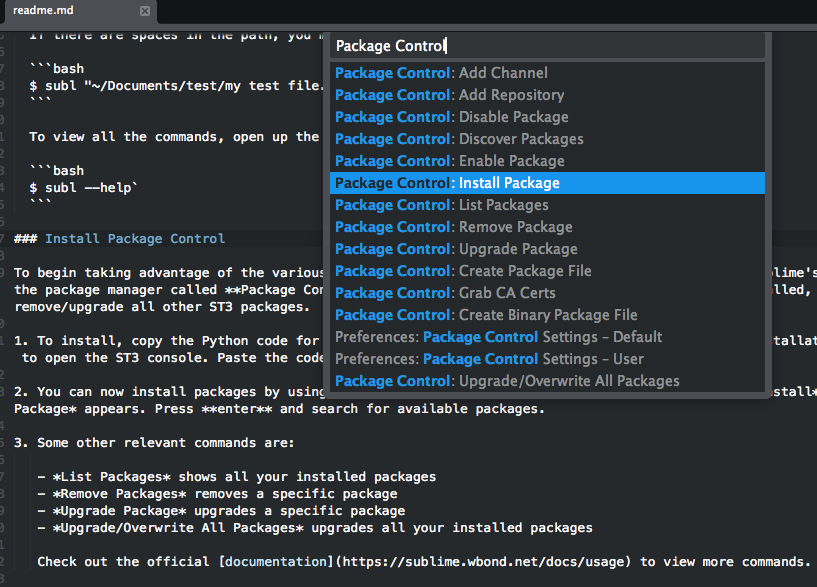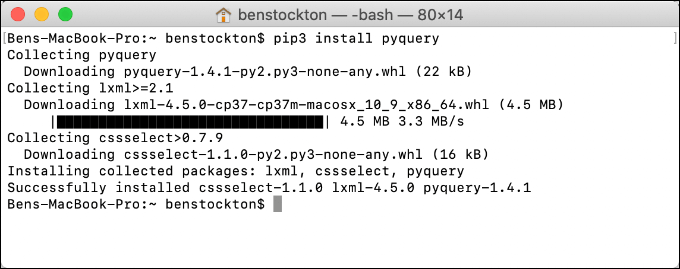Python, a general-purpose programming language which is versatile and popular can easily be installed on Ubuntu via multiple methods… This post shows students and new users how to manually install the latest version of Python programming language on Ubuntu 16.04 | 18.04.
This post will also show you how to install Python via a third-party PPA which makes managing and updating to future versions easier from the PPA repository.
The situation: I'm trying to install pyside on a project using the PyCharm IDE, however it says that it does not support python 3.5 that is installed by default on ubuntu 16.04. It does support python 2.7, however I'd rather not start a new project using python 2. What I've done: So I download python 3.45, extracted it, and I am successful in installing it to a directory using the following. Install OpenCV 3.4.4 Step 0: Select OpenCV version to install echo 'OpenCV installation by learnOpenCV.com' #Specify OpenCV version cvVersion='3.4.4' We are also going to clean build directories and create installation directory. # Clean build directories rm -rf opencv/build rm -rf opencvcontrib/build.
With Python, you can do almost anything like writing simple or advanced scripts, build and program robots and complicated machineries, develop websites and many more…. Python lets you work quicklyand integrate systems more effectively.
If you are using Ubuntu 16.10 or newer, then you can easily install Python 3.6 with the following commands: $ sudo apt-get update $ sudo apt-get install python3.6 If you’re using another version of Ubuntu (e.g. The latest LTS release) or you want to use a more current Python, we recommend using the deadsnakes PPA to install Python 3.8. May 09, 2014 This quick tutorial is going to show you how to install Python 3.3.5 (or 3.4.0) and set as default in Ubuntu 14.04 and Ubuntu 12.04. Python 3.3.5 was released on March 9th, 2014. It fixed: a 3.3.4 regression in zipimport; a 3.3.4 regression executing scripts with a coding declared and Windows newlines.
When you’re ready to install Python, continue with the steps below:
There are many ways to install Python on Ubuntu… Below are two methods that show you how to manually install from source code and via third-party PPA repository…
Method 1: Manually Installing Python
Some users may want manually install the latest version of Python on Ubuntu by building from the source code… To do that they will need to download the installer file and run the executable…
Before installing Python from its source code, you must first install some required packages that are needed to build Python from source. To get these packages installed, run the commands below:
After installing the above packages, go and download the latest release’s source code from the Python download page using the following wget command.
At the time of writing this post, 3.7.2 is the latest Python version… If you find a later version on the site, you can download it instead…
After downloading the package, run the commands below extract the file and install.
Next start the building process using the make command. Replace the #1 with the number of CPU cores on your system for faster build time… My machine has 1 CPU core, so I use the make command with -j 1 option…
Do not use the standard make install as it will overwrite the default system python3 binary…
After that, Python should be installed and ready to use…
To test if Python is installed and ready to use, run the commands below
python3.7 --version
You should see an output similar to the one below:
Python 3.7.2
That’s how you install Python from its source
Method 2: Installing Python via PPA
If you quickly want to get the latest version of Python installed on Ubuntu and get future updates automatically, then you can install it from the below third-party PPA repository…
To do that, run the commands below to add the PPA.
First install Ubuntu software properties package if it’s not already installed on your system.
After that run the commands to add the PPA.
sudo add-apt-repository ppa:deadsnakes/ppa
Finally, run the commands below to install Python 3.7
That’s it!
You have learned how to manually install Python from its source code as well as how to add a third-party PPA to install the latest version of Python…
You may also like the post below:
If you want to get started with the latest version of Python3.x on Ubuntu 20.04 LTS, then here is the tutorial along with the installation of PIP3 and its usage to install various Pythons Packages.
If you have just started taking interest in coding and software development then you would already know Python. It is an open-source and free to use programming language that has been used to develop hundreds of software projects. Python is platform-independent language thus can run on all mainstream operating systems such as Windows, Linux / Unix, Mac OS X, Solaris more…
Python has been very popular among the developers because of its powerful range of functions and libraries with only a few keywords and the reduced grammatical syntax and the resulting clarity. With Python, you can not only write your own programs but also can integrate scripting language in other applications furthermore building AI models is another usage of Python.
What we learn:
- Installation of Python3’s latest version on Ubuntu 20.04.
- How to install PIP3 on Linux
- How to manage multiple Python versions installation.
- Change the Default Python version
What do we need to perform this tutorial?
- A non-root user with
sudorights - Ubuntu 20.04 LTS server or desktop system
- The internet connection to download the packages.
Contents
- Step to install Python3 on Ubuntu 20.04 LTS
Step to install Python3 on Ubuntu 20.04 LTS
Run system update command
Open the command terminal, for GUI Desktop use Applications or the keyboard shortcut CTRL+ALT+T on Ubuntu. And run the system update command, so that our existing repos and packages can be updated.
Download and install Python3
The good thing is to install python on Ubuntu, we don’t need to add any third-party repository. The programming language is available by default on the official repo. Thus, what we have to do is the running of the command with the version you want to download and install on Ubuntu 20.04 LTS focal fossa.

For Python 3.x:
The latest version in our case for Python was python 3.8.6.
For Python 2.x:
In case also want the older version, then use this command; it will download python2.7 for you.
Check installed Python version
If we go through the tutorial then you would have two different Python on the same system. Thus, the command to call the interpreter will also be different.
To check the version of Python 3.x, the command will be:
And for Python2.x
And for default:
Change the Default Python version on Ubuntu Linux
By default, the command python will be associated with version 2.x and will only call that whereas python3 for version3.x. Therefore, if you are fine with that then skip this step. However, those want to use python3 with python command instead of using its version repeatedly, then use the below procedure.
First, check the default version:
The output will be version will be 2.7.x
Python 2.7.18rc1
Now, see all the installed versions of Python on your system:
In our case, the output was:
So, you can see the two versions that are available to the user- 2.7 and 3.8. In the same way, you would have on your command terminal.
Now, we set one of them as the default Python versions for Ubuntu’s current user. Well, by default, it was 2.7, thus we are changing it to 3.8 here.
In the same, replace 3.8 in the above command with the one, want to use by default for your current user.
Now, log out and log in again or simply source the bash file:
Finally, check the default version:
This time it will be 3.8 or whatever you have set.

Install PIP3 on Ubuntu 20.04 LTS
Well, in most of the cases after install python you will get the PIP that is the packages installer for Python. Thus, in case you don’t have then get the PIP for Pthong on Ubuntu manually:
Just the Python, pip3 is not the default version that we can use with only pip command. Thus, we can also change that simply using
alias pip=pip3
Therefore, to call the other pip version you need to given the version along with it. However, after using the above command the default pip will work for the pip3 version.
For upgrading pip:
In future to upgrade the pip, use the command:
Python 3.4 Install Pip
How to install Python packages using PIP
syntax: pip install packages-name
Now, let’s use the pip to install some Python-based libraries such as Numpy
In case you get a warning:
WARNING: The scripts f2py, f2py3 and f2py3.8 are install in ‘/home/user/.local/bin’ which is not on PATH. Third grade classroom management.
Download Python 3.4
Consider adding this directory to PATH or, if you prefer to suppress this warning, use –no-warn-script-location.
This appears because the PIP installed location is not available in the PATH thus add it:
Command Reference
So, this was the quick tutorial on the Python 3.x and Pip3 installation on Ubuntu 20.04 LTS…
